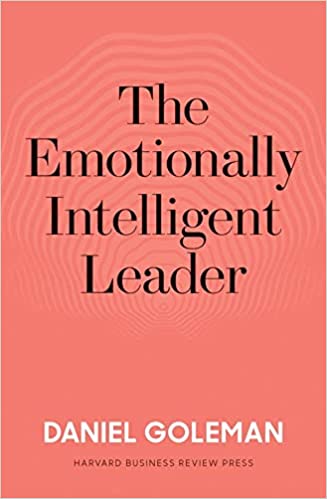Great by Choice
RATING


Following his bestseller Good to Great, Jim Collins partners with Morten Hansen to give us Great by Choice. Building on the content found in his previous works, Collins uses a similar format of case studies and analyzed research to identify drivers of success in “great” companies. By comparison, however, this new book looks specifically at companies who have excelled despite unstable environments and market turbulence. These companies are not ones that have been shooting for the stars; the companies are consistent in action and focus on four key aspects of business:
- Fanatic Discipline: Remaining true to values regardless of economic conditions.
- Productive Paranoia: Perceiving what can go wrong and planning for the worst.
- Empirical Creativity: Gathering tangible evidence gained through testing and observation to drive innovation.
- Level 5 Ambition: Aiming for company, rather than personal, success.
These concepts create the foundation for Great by Choice and give us an overview of how businesses have been able to find success despite uncertain conditions. Through the same methodology of concepts, case studies, and analyses, Collins and Hansen look into these companies and derive what they have identified as qualities that “great” companies embody.
This book is a welcome follow-up for Good to Great as it is a more realistic take on the modern marketplace. Economic conditions are not always calm, and Great by Choice provides us with a glimpse of how companies have adopted viewpoints and strategies that have allowed them to excel. Two chapters that caught our attention were “Fire Bullets, Then Cannonballs” and “SMaC.” The former describes a concept that involves feeling for what the consumer desires by trying multiple offerings, and then directing redoubled effort using the information gathered from “firing bullets.” Essentially, this involves probing the customer and understanding their wants, desires, and expectations in order to provide a more targeted product and campaign specifically tailored to them. The concept is no different than banks speaking to customers in order to understand their current and future situation before creating product packages that fulfill their needs. “SMaC” focuses on the process itself and highlights how they are not random; with the environment being uncertain, companies need to use their knowledge to create a process that is direct, organized, and repeatable. These two concepts are in alignment with how a relationship is built – over a period of time through contact that is consistent and relevant to the consumer.
There is the huge caveat that the research concludes in 2002 despite the book being published in 2011. While we do agree that the research is still very substantive, it lacks analysis of the recent financial crisis which, if agreeing with their claims, would solidify what the authors claims makes companies “great.” The findings should be taken with a grain of salt as this is no predictor of future success. Comparisons made, such as Microsoft to Apple, indicate that “greatness” for a company does not instantly equal exponential gains, and this is merely a historical approach that is not always forward facing. The book gives nothing to the reader in terms of direction or actionable items; instead, it just gives descriptions of what qualities are embodied by their subject companies. While we do not discount the information, we believe that this is echoing of Collins’s previous books and has diminishing returns by comparison. Overall, we were expecting much more recent and actionable information following Good to Great, but we were left wanting more.
Ten years after the worldwide bestseller Good to Great, Jim Collins returns with another groundbreaking work, this time to ask: why do some companies thrive in uncertainty, even chaos, and others do not? Based on nine years of research, buttressed by rigorous analysis and infused with engaging stories, Collins and his colleague Morten Hansen enumerate the principles for building a truly great enterprise in unpredictable, tumultuous and fast-moving times. This book is classic Collins: contrarian, data-driven and uplifting.
Collins and Hansen put the burden of value on the shoulders of the reader by once again giving readers research content but foregoing any direction in terms of application. Companies who are in environments subject to market turbulence would greatly benefit from understanding what successful companies do to stay afloat, though all companies would do well to heed what is discussed in the book. Again, it is necessary that readers consider their own business situations prior to attempting any sort of interpretation and application of the concepts discussed. Specifically, this book is best in the hands of those creating contingency plans and risk-action models for companies as the aim of the book is to identify qualities that allow companies to thrive in turbulent environments. It would be best to couple this book with Collins’ other works of Good to Great and Good to Great and the Social Sectors.

As with his previous works, Jim Collins gives us a very well researched look into companies and their success. However, the same shortcoming comes into play – the book is solely research based. Much of the utility comes from derived application methods and internalization of the content by the readers. While there is clearly room for application, it is not explicit in the book.
See content on this topic


Sales training for front line along with basic development and coaching principles for line management.
Understanding how leaders must evolve with relation to the evolution of business models, new management models, and the significant changes to the workforce with Digital Natives now making up more than 50% of the workforce globally.
Understand the theory and mechanics of developing and managing a customer-centric and experience-driven corporate culture that is consistent and stable and includes elements of Employee Experience (EX) and Employee Relationship Management (ERM).
Understanding the evolution of leadership styles, management models, organizational structures, performance measurement and guiding change in the evolution of business models from product-centric to customer-centric and even relationship-centric.
Understand how to manage both internal and external digital transformation while considering the landscape for digital business models and the effect on traditional business models. Understanding organizational readiness for transformation and the role of corporate culture in managing transformations.
The changes in consumer behavior, employee behavior, and the evolution of business models in the digital age cause significant difficulties and imperatives for leaders who must develop new skills and evolve their leadership styles to be effective in this fast changing, challenging, and competitive environment.
Understanding how leaders must evolve with relation to the evolution of business models, new management models, and the significant changes to the workforce with Digital Natives now making up more than 50% of the workforce globally.
Understand how to manage both internal and external digital transformation while considering the landscape for digital business models and the effect on traditional business models. Understanding organizational readiness for transformation and the role of corporate culture in managing transformations.
The changes in consumer behavior, employee behavior, and the evolution of business models in the digital age cause significant difficulties and imperatives for leaders who must develop new skills and evolve their leadership styles to be effective in this fast changing, challenging, and competitive environment.
Understanding how to design & manage change/transformation programs in organizations of different sizes. This course will help any size team or organization to better deal with change & transformation on any scale.




 Copy Link
Copy Link
 E-mail
E-mail
 LinkedIn
LinkedIn
 Facebook
Facebook
 Telegram
Telegram
 WhatsApp
WhatsApp















 Go Back
Go Back
Leave a Reply
You must be logged in to post a comment.